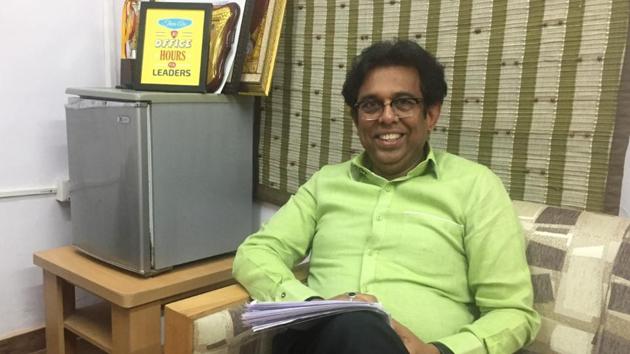Tweaking Bhilwara model for other Covid-19 hotspots in Rajasthan, says top official
Rajasthan Chief Minister Ashok Gehlot had recently praised the Bhilwara model to contain the spread of coronavirus disease Covid-19.
The Bhilwara model of ruthless containment is being lauded nationally. The Rajasthan medical and health department is facing challenge to contain the spread of Covid-19 in other hotspots such as Ramganj neighbourhood in Jaipur and Jhunjhunu.

In an interview with Hindustan Times’ Rakesh Goswami, Rajasthan’s additional chief secretary of medical and health department Rohit Kumar Singh said that the model needs to be tweaked for other hotspots.
Here are some excerpts from the interview:
Q: How do you plan to use the Bhilwara model of containment in other hotspots such as Ramganj?
Rohit Singh: The Bhilwara model is a typical containment strategy. It starts with lockdown, and lockdown means lockdown - no movement, no exemptions. Of course, you have to make arrangements for the essentials. For other hotspots, it needs to be tweaked. The principle will remain the same but will have to be adapted to local situation. For example, in Ramganj, social distancing is physically not possible because of population density. You need to quarantine a far larger number of people. As compared to Bhilwara, we are putting 10X more people from Ranganj in quarantine.
Q: Why did Ramganj go out of hand?
Rohit Singh: This happened because of the way the locality is structured, in term of population density, in terms of how people engage socially. Social distancing is culturally difficult to implement. The square feet of the houses is so low that if you advise someone home isolation, they cannot practice social distancing. It’s very cultural. So we decided to quarantine people en mass. If you compare with Bhilwara, we are putting 10 times more people in institutional quarantine facilities. After the police imposed a stricter curfew from Tuesday, we are now changing our strategy for testing. Now, we are going for cluster sampling for tests. We will collect around 500 samples from different clusters in Ramganj for testing from today (April 8). Until yesterday, we were testing 90-100 samples, so this is a 5X increase in testing to check if transmission is gone to the third stage of community spread. Besides Ramganj, we know that there are similar places outside the walled city such as Hasanpura and Jalupura where probably the cases are there but we don’t know. So we will also take samples from these areas as well.
Q: Is there any similarity between Bhilwara and Ramganj?
Rohit Singh: Yes. In both cases, negligence of one person caused the outbreak. In Bhilwara, this doctor continued to see patients despite having influenza-like illness. From him, the disease got transmitted to so many people. Similarly, in Ramganj, this gentleman comes from Oman and doesn’t tell anyone. When a local doctor advises him home isolation, he roams around the town with a friend. Out of 100-odd cases from Ramganj, almost all are because of him.
Q: Centre has called for three-tier Covid-19 health facilities. What is the status in Rajasthan?
Rohit Singh: In Rajasthan, every district has a dedicated Covid-19 hospital. In Jaipur, for example, SMS Hospital has a capacity of 1,000 Covid-19 beds - 650 beds are ready and the remaining can be readied in a matter of 24 hours. The government of India is very rightfully saying you plan for any eventuality, so that when it spreads only serious patients are handled in tertiary care. As advised by government of India, we will have different facilities for different types of patients.
Q: As the cases rise, the need for more PCR tests will be felt. Are you prepared for that?
Rohit Singh: Because of our advanced planning, and an early case - the first case was reported on March 2 - we have enough PCR kits. We are sourcing them from ICMR while Vaibhav (Galeria, secretary of medical education department) and his team are parallelly talking to private suppliers. We have PCR machines at eight medical colleges. One more machine has been installed at Bhilwara for which permission from ICMR is awaited. We are testing more people than most states. Our testing per million population is only behind Kerala. In statistical terms, if you plot number of cases against number of tests, we are in good quadrant - less positive and more testing.
Q: What are newer challenges?
Rohit Singh: Newer and emerging hotspots such as Pokaran in Jaisalmer and a small cluster in Kota are new challenges. Jhunjhunu is also a challenge. The good thing is that most of the patients are below 50-55 years, which is a very good thing because they have better immunity and the likelihood of them recovering is very high.






